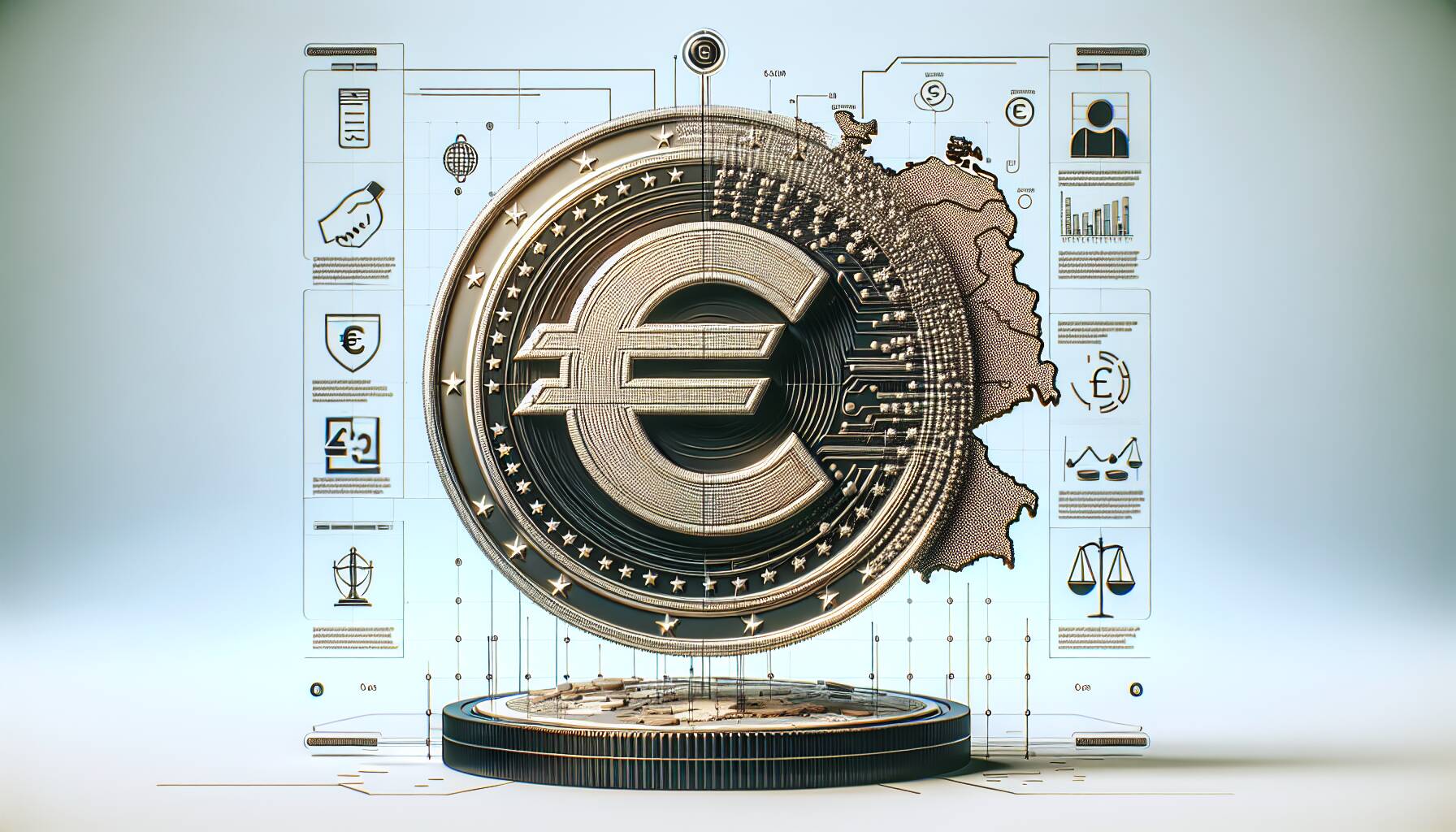A significant milestone in the cryptocurrency industry has just been achieved with the announcement of Germany’s first regulated, euro-denominated stablecoin, the AllUnity EURAU. This groundbreaking initiative is a collaborative effort involving Deutsche Bank’s asset management arm DWS, Flow Traders, and Galaxy. Following the acquisition of an e-money institution (EMI) license from the Federal Financial Supervisory Authority (BaFin), the partners are set to launch this innovative digital asset that marks a new chapter in stablecoin development.
The AllUnity EURAU is designed to be fully collateralized and aims to ensure institutional-grade transparency through rigorous proof of reserves and regulatory reporting. This next-generation stablecoin is expected to facilitate instant cross-border settlements, making it an ideal solution for regulated financial institutions, fintechs, and enterprise clients across Europe and beyond, as emphasized in the release by AllUnity.
The emergence of EURAU represents a significant addition to the landscape of euro-pegged tokens, joining others such as Circle’s EURC and Société Générale’s EURCV, particularly in the wake of the Markets in Crypto Assets (MiCA) framework that came into effect a year ago. CEO Alexander Höptner remarked that obtaining the EMI license is not solely a regulatory achievement, but a crucial step towards establishing a secure and transparent digital payment ecosystem.
With the market cap of euro stablecoins rapidly approaching $500 million, the launch of EURAU is timely and relevant. This initiative signals a growing acceptance and integration of stablecoins within both the European market and the broader global financial landscape, further bridging the gap between traditional finance and innovative digital solutions.

Germany’s First Regulated Euro-Denominated Stablecoin
This article highlights the key aspects of the launch of Germany’s first regulated, euro-denominated stablecoin, which may have significant implications for users, businesses, and the financial landscape in Europe.
- Joint Venture Launching Stablecoin:
- Partnership among Deutsche Bank’s DWS, Flow Traders, and Galaxy (GLXY).
- Supports the growth of the cryptocurrency market in Europe.
- Regulatory Approval:
- Received e-money institution (EMI) license from BaFin.
- Compliance with Europe’s Markets in Crypto Assets (MiCA) framework enhances trust.
- Features of EURAU Stablecoin:
- 100% collateralized ensuring stability in value.
- Institutional-grade transparency with proof of reserves and regulatory reporting.
- Applications of EURAU:
- Facilitates 24/7 instant cross-border settlements.
- Seamless integration for regulated financial institutions and fintechs.
- Growing Market for Euro-Pegged Tokens:
- Joins other euro-pegged tokens, enhancing choices for users.
- Market cap of euro stablecoins nearing $500M suggests significant adoption.
- Leadership Insights:
- Alexander Höptner emphasizes the importance of regulatory compliance for security.
- Aims to create a secure and transparent digital payment ecosystem.
Germany’s First Regulated Euro-Denominated Stablecoin: Competitive Landscape Analysis
The recent announcement of the AllUnity EURAU stablecoin marks a significant development in the digital currency landscape, particularly for regulated financial institutions and fintechs in Europe. This venture, backed by prominent players like Deutsche Bank’s DWS, Flow Traders, and Galaxy, offers distinct competitive advantages that could reshape the market for euro-pegged tokens.
One of the most notable benefits of EURAU is its 100% collateralization combined with institutional-grade transparency through proof of reserves. This contrasts sharply with other established tokens in the market, such as Circle’s EURC and Société Générale’s EURCV, which may not fully emphasize regulatory compliance in their foundational structures. The commitment to adhere to the Markets in Crypto Assets (MiCA) framework enhances the credibility of EURAU, potentially attracting cautious investors and institutional clients looking for security in their crypto dealings.
However, the landscape is not without challenges. The existing euro-pegged tokens like EURC and EURCV already command a share of the market while benefitting from established brand recognition and user bases. This entrenched competitive position presents a barrier for EURAU. As the strategic adoption of stablecoins continues to rise, the imminent presence of several similar products may dilute the market interest and customer acquisition for newcomers like EURAU.
This stablecoin’s introduction is predicted to benefit institutional investors and regulated financial entities seeking a compliant payment solution. Its potential for 24/7 cross-border settlements can streamline operations for businesses engaged in international trade. Meanwhile, the emphasis on regulatory compliance could create friction for smaller fintechs and new market entrants who may struggle to meet stringent requirements, limiting their ability to compete effectively in a rapidly evolving financial ecosystem.

















